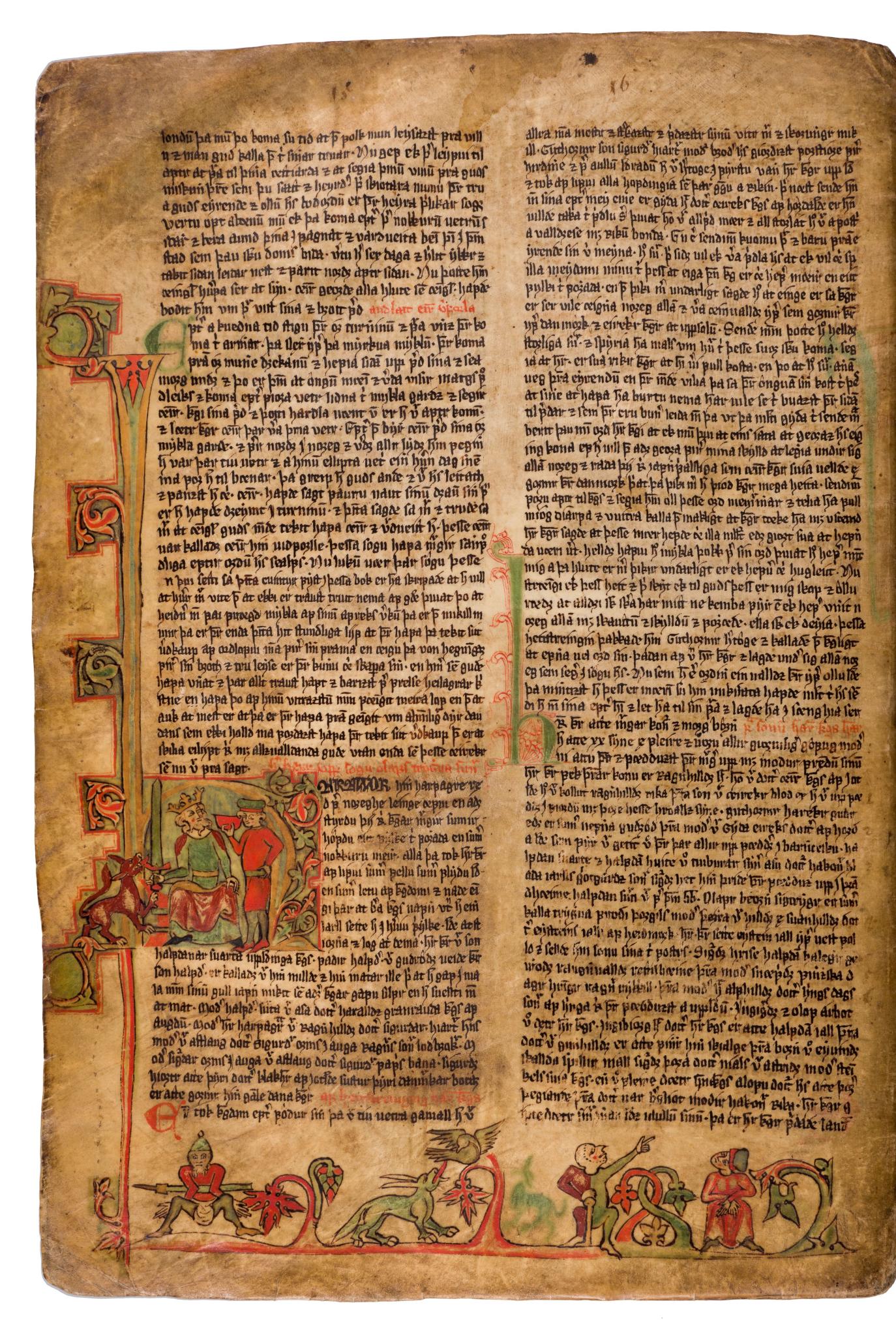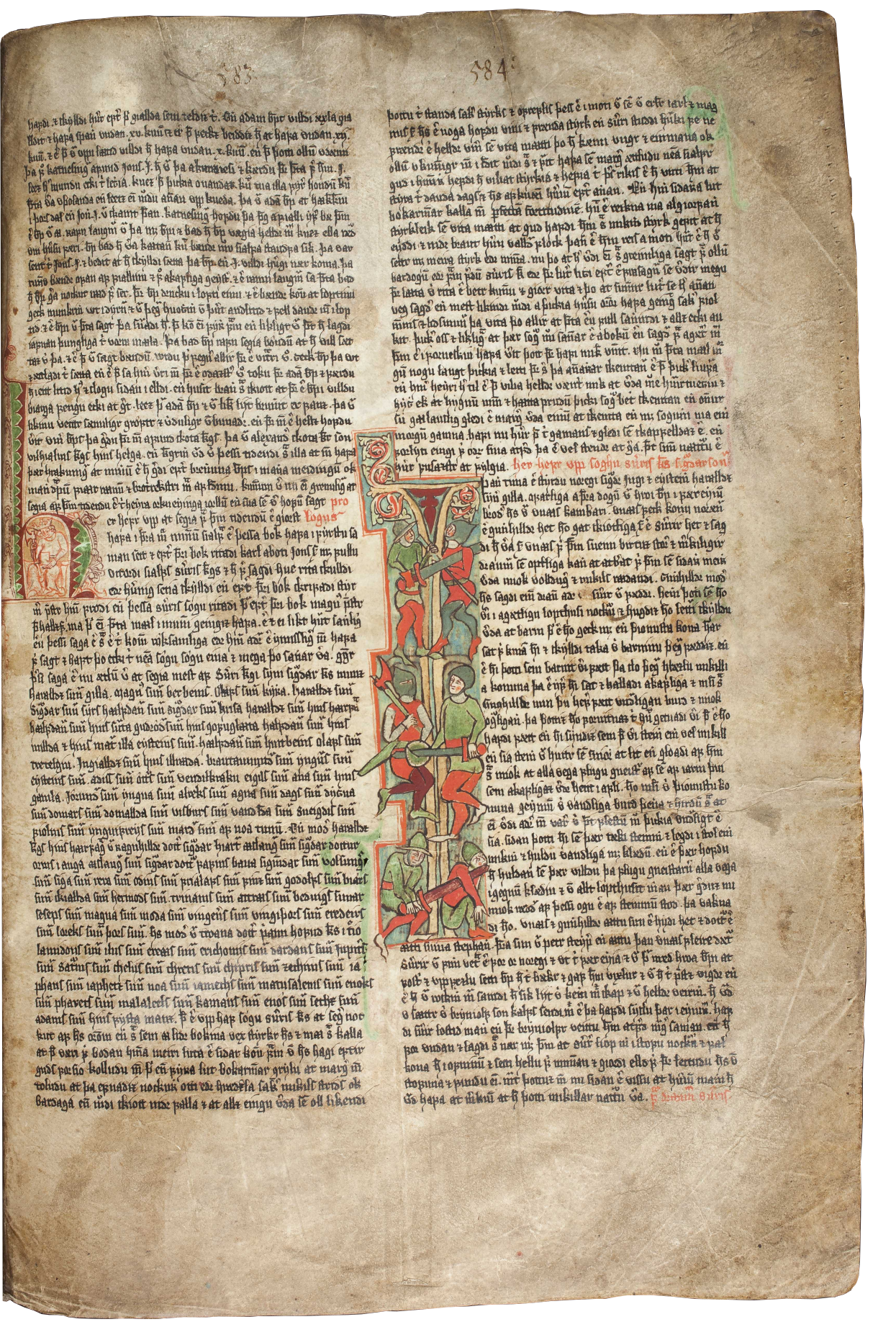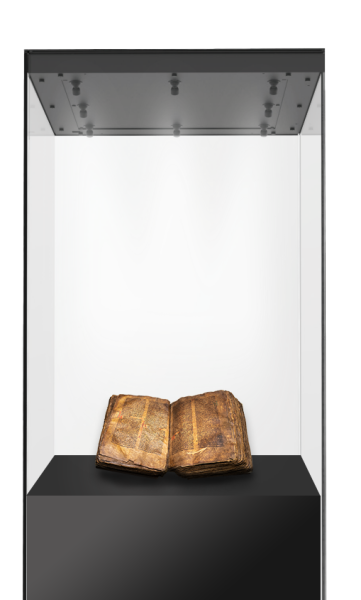The exhibit is divided into sections. Each section presents a certain topic in reference to the manuscripts’ contents together with images and informative interactive elements. Each of the five main sections feature manuscripts on display that connect to the topic’s theme. These five main sections deal with the creation of the world, human life, worldviews, law and order and lastly the end of the world.
To a large extent, the exhibition deals with creation, the creation both of the world and of manuscripts, and the continual process of creation that exists in language. A wide range of media will be used to communicate the material, as in addition to viewing the manuscripts themselves, guests can immerse themselves in texts and touchscreens, watch videos, listen to recorded readings of various types and play games.
Presentation
What is the beginning of time? Where does the history of the world begin? Our current answer is that the universe can be traced back to the Big Bang. In the Middle Ages, the Bible’s creation story dominated Icelanders’ ideas about the origin of the world, but they also inherited pagan mythologies about the world’s creation.
The manuscripts describe a wealth of ideas on human life, human nature and the human’s relationship with higher powers. We are all made of flesh and blood. We are born, we die and we feel. Our understanding, however, is shaped by the times we live in.
The worldview of the settlers appears as mythology, pre-Christian ideas about how the world is ordered, which survived in stories and poetry. They tell us about the world tree and how it stretches across the sky and through the earth, about the norns who twine the threads of human fate and can see into the future, about events in the world of the gods as they give rise to natural phenomena like weather and earthquakes.
We don’t know when people first set foot in Iceland. They most likely first came on shorter visits to access conditions. Coordinated settlement, however, wasn’t undertaken until after the mid 9th century.
The people who settled Iceland did not preserve their cultural heritage in books. Poems and stories of mortals and gods, laws and rules and practical knowledge — it was all preserved in the minds of the people and passed down orally from one generation to the next.
After writing traditions were ushered in with the adoption of Christianity in Iceland, a complete change took place. The work of the church and the teachings of its clergy was based on the written word. Gradually Icelanders adopted this new practice and began writing down all that used to be passed down orally. Instead of living texts that were perhaps never entirely identical in their oral iterations, there was now a text recorded in permanence on parchment in a certain volume.
Talk of the end of the world tends to haunt us mortals. These days mankind fears that climate change will make the Earth uninhabitable. Medieval Icelandic texts describe how the world will perish in fire, only to be later reborn.












